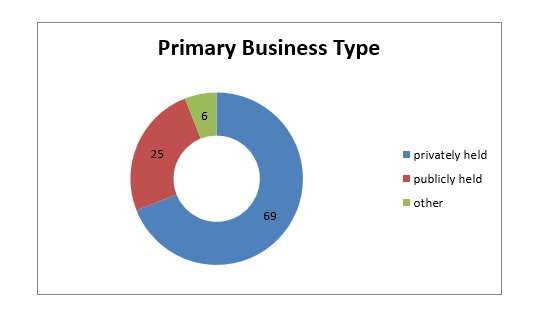 Wealth-X has released its World Ultra Wealth Report 2014, noting that though the world’s Ultra High Net Worth population as defined here includes only 211,275 individuals, or 0.004% of the adult population, it controls 13% of the world’s wealth. The report then engages in what seems an instance of literary understatement: the UHNW folks have “a large degree of influence, whether on global equity markets or specific industries.”
Wealth-X has released its World Ultra Wealth Report 2014, noting that though the world’s Ultra High Net Worth population as defined here includes only 211,275 individuals, or 0.004% of the adult population, it controls 13% of the world’s wealth. The report then engages in what seems an instance of literary understatement: the UHNW folks have “a large degree of influence, whether on global equity markets or specific industries.”
Quite
If one includes the networks of family and friends who surround those 211,275 individuals, the ranks of those with “access” to wealth at that level reaches the one-million mark.
Their wealth and influence have both increased over the past year. Those who are in the business of selling luxury goods, and those who invest in those who do so, will both care that UHNW money accounted for 19% of the total purchases in that industry over the last year.
The average UHNW individual spends a little over US$1 million each year on luxury goods and services, including everything from travel to wine to apparel. They spent $23 billion last year on private aviation alone, constituting 82.1% of the market demand for same. They spend a little less on yachts (US$22 billion), amounting to 88% of the market demand there.
Wealth-X acknowledges that its prediction last year was not sufficiently rosy for the world’s most fortunate. Their wealth increased as a faster-than-forecast rate. This doesn’t deter continued forecasting efforts. The new report predicts that over the next five years the global UHNW population will continue to rise, getting to 2250,000, and that its combined wealth will reach US$40 trillion, from $29.7 trillion at present.
On a region-by-region basis, too, the report concedes some crystal-ball-gazing failures. “Asia’s performance was less impressive than expected.” Its performance was, against other regions, merely average. The authors had expected it would do better.
Nation by nation, unsurprisingly, Asia’s results are heterogeneous. India saw strong growth in both the size and the wealth of its UHN-worthers: more than 9% growth in population, 8% in wealth. But in both Japan and China, growth was slow.

Source: Adapted from Wealth-X Ultra Wealth Report 2014
None of this dents Wealth-X’s confidence that the world is “in the early stages of an ongoing shift in wealth creation globally from West to East.” Within the next ten years Asia will, the report predicts, overtake Europe in terms of UHNW wealth.
In particular, Hong Kong and Singapore will continue to benefit from proximity to the vast markets of the People’s Republic of China, “while promising more stable and transparent government” than Beijing can.
The report suggests that the wealth of the ultra-wealthy is quite robust; it can ride out such difficulties as it is likely to encounter. This elite “holds over two thirds of [its] net worth in business holdings, and [tends] to have long-term investment horizons” getting it past “much of the short-term volatility that can occur,” such as U.S. government shutdowns and/or showdowns over debt ceilings.
What are those business holdings?
Breaking down UHNW individuals by the primary type of businesses in which they have an interest, shows the great significance for them of privately held enterprises.

Source: Adapted from Wealth-X Ultra Wealth Report 2014
In publicly held private businesses, the report observes, “the constant pressure of hitting quarterly targets can make it difficult to achieve the long-term vision that many UHNW individuals first have when starting their business.” Thus, there is an aversion to going public, which explains those numbers.
On the other hand, there will often be a temptation to go public once a private business has proved sustainable, and a listing becomes the obvious way to raise money that will allow the scaling of the model.
Those older North Americans
The report provides a sobering fact about the demographics of UHNW in North America. The average age of these individuals there is 61, which means such individuals on that continent are “older than their counterpart sin other regions, and have often moved beyond the stage of wealth accumulation, focusing instead on wealth preservation.”
In North America, too, the UHN-worthers tend to hold a lot of their wealth in cash, “which typically delivers lower returns than equity investments.” They are being cautious these days, keeping their powder dry.
In the United States in particular, 9.2% of the UHNW individuals made their wealth in the technology sector. The U.S., then, has the heaviest weighting of tech-originated wealth on the globe, barely edging out Israel (9.1%) in this respect. The report’s authors see this as a manifestation of the continuing strong entrepreneurial culture in the U.S.



